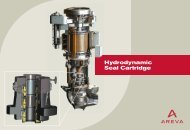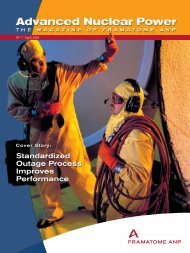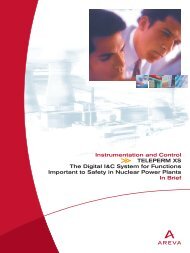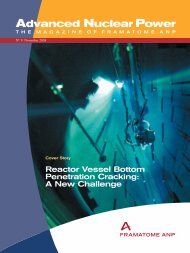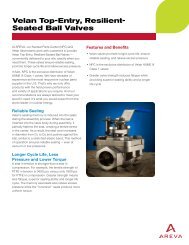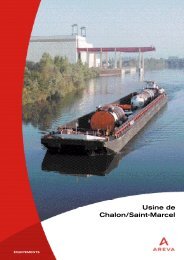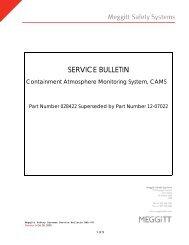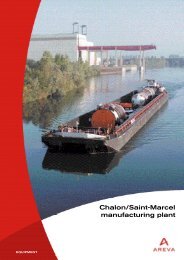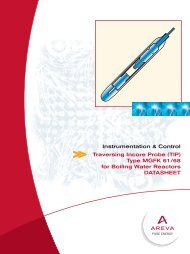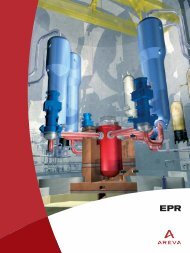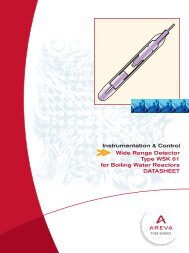Areva EPR
Areva EPR
Areva EPR
You also want an ePaper? Increase the reach of your titles
YUMPU automatically turns print PDFs into web optimized ePapers that Google loves.
■ <strong>EPR</strong> NUCLEAR ISLAND<br />
PRIMARY SYSTEM<br />
†<br />
PRIMARY SYSTEM CONFIGURATION<br />
The <strong>EPR</strong> primary system is of a well proven 4-loop design.<br />
French 1,300 MWe and 1,500 MWe N4 reactors as well as German<br />
KONVOI reactors are also of 4-loop design.<br />
In each of the four loops, the primary coolant leaving the reactor<br />
pressure vessel through an outlet nozzle goes to a steam generator<br />
– the steam generator transfers heat to the secondary circuit –, then<br />
the coolant goes to a reactor coolant pump before returning to the<br />
reactor pressure vessel through an inlet nozzle. Inside the reactor<br />
pressure vessel, the primary coolant is first guided downward outside<br />
the core periphery, then it is channeled upward through the core,<br />
where it receives heat generated by the nuclear fuel.<br />
A pressurizer, part of the primary system, is connected to one of the<br />
four loops. In normal operation, its main role is to automatically<br />
maintain the primary pressure within a specified range.<br />
The <strong>EPR</strong> main reactor components: reactor pressure vessel,<br />
pressurizer and steam generators feature larger volumes than similar<br />
components from previous designs to provide additional benefit in<br />
terms of operation and safety margins.<br />
The increased free volume in the reactor pressure vessel, between<br />
the nozzles of the reactor coolant lines and the top of the core,<br />
provides a higher water volume above the core and thus additional<br />
margin with regard to the core “dewatering” time in the event of a<br />
postulated loss of coolant accident. Therefore, more time would be<br />
available to counteract such a situation.<br />
This increased volume would also be beneficial in shutdown<br />
conditions in case of loss of the Residual Heat Removal System<br />
function.<br />
Larger water and steam phase volumes in the pressurizer smooth<br />
the response of the plant to normal and abnormal operating<br />
transients allowing extended time to counteract accident situations<br />
and extended equipment lifetime.<br />
The larger volume of the steam generator secondary side results in<br />
increasing the secondary water inventory and the steam volume,<br />
which offers several advantages.<br />
• During normal operation, smooth transients are obtained and thus<br />
the potential for unplanned reactor trips is reduced.<br />
• Regarding the management of steam generator tube rupture<br />
scenarios, the large steam volume, in conjunction with a setpoint of<br />
the safety valves of the steam generators above the safety injection<br />
pressure, prevents liquid release outside the reactor containment.<br />
• Due to the increased mass of secondary side water, in case of an<br />
assumed total loss of the steam generator feedwater supply, the<br />
dry-out time would be at least 30 minutes, sufficient time to recover<br />
a feedwater supply or to decide on other countermeasures.<br />
In addition, the primary system design pressure has been increased<br />
in order to reduce the actuation frequency of the safety valves which<br />
is also an enhancement in terms of safety.<br />
Cattenom, France (4 X 1,300 MWe): inside a reactor building.<br />
14 I



